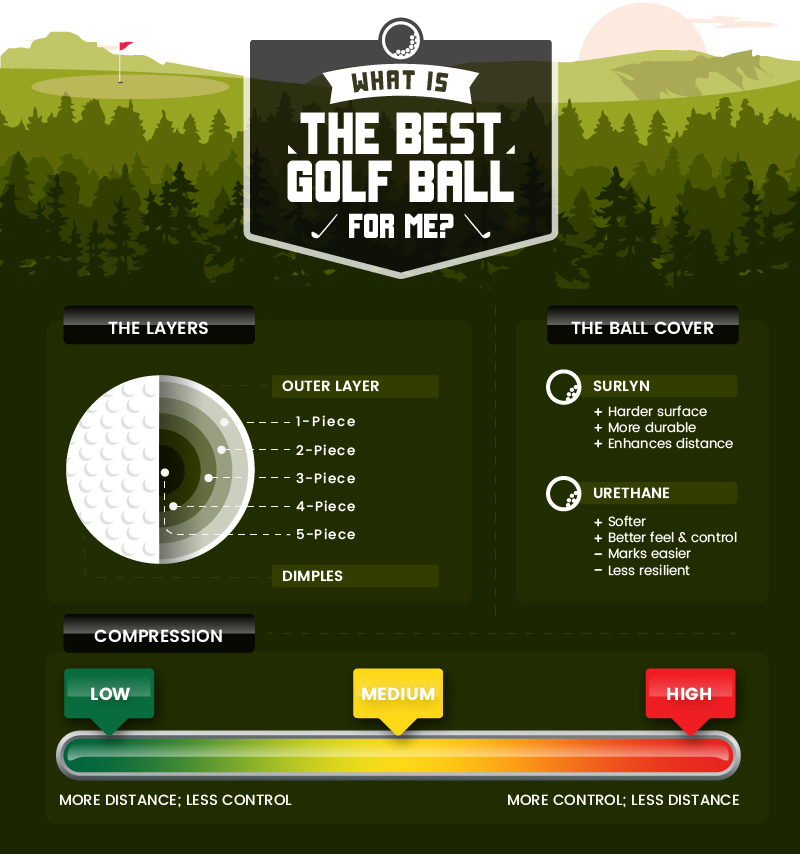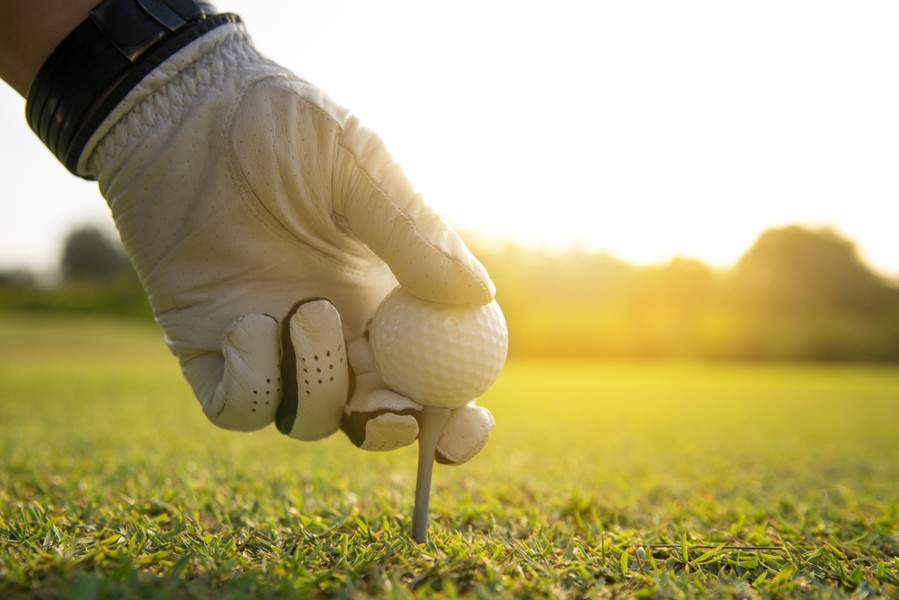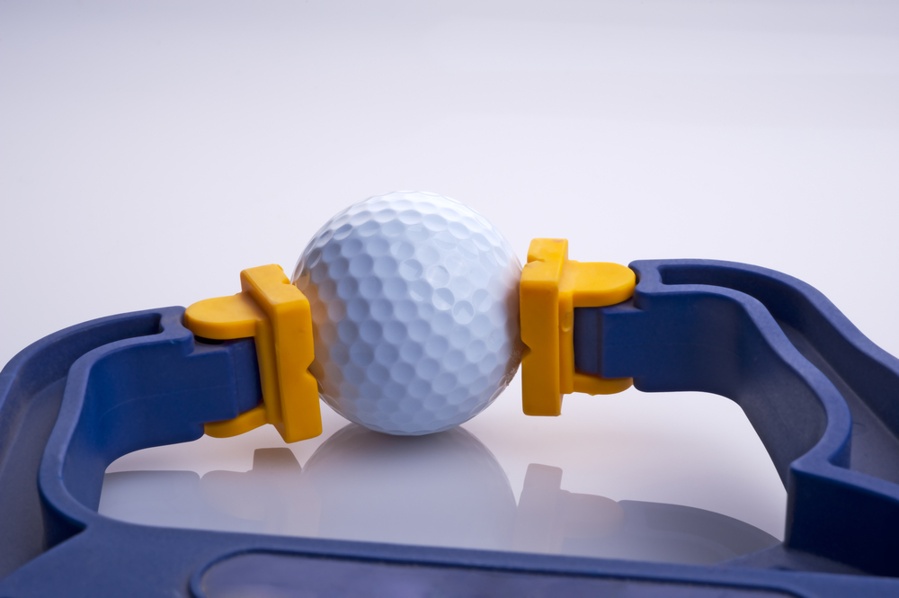What Is The Best Golf Ball For Me?
Just like golf clubs, picking out a golf ball can be an intimidating process – especially if you are a beginner in the sport. With a number of different golf ball models and style available, today’s golfers are spoilt for choice. But how can golfer’s make an informed choice when they are faced with so many options? You may be wondering “what is the best golf ball for me?”, but do not worry. In this golf ball buyer guide, we have outlined each golf ball to give you a helping hand to find out which golf ball is best for you to complement your golfing game.
Much like the rest of your golf essentials, golf balls play an important part of your game. They can improve control, speed and distance. Simply, this is why there are so many different ball types on the market, as everyone plays differently. Golf ball technology, from lightweight materials to having layers and varied compression levels, can help to improve a golfer’s game. As a result, it is important to ensure that you are picking the right golf ball for you.
The technicalities of golf balls
When it comes to golf balls, there are three things that matter: the cover, layers and compression. But, what do they mean for amateur players? How do golfers know which ball is right for them? Let us explain what the key features of a golf ball are, and what they mean in relation to the game:

The ball cover
There are two main materials used to cover a golf ball, which include Urethane and Surlyn. Most tour balls use urethane as it helps to deliver the highest spin on wedge shots, however, it is not as durable as other materials, such as Surlyn.
What is the difference between the two types of golf ball cover?
- Surlyn
They typically have a harder surface and are more durable in comparison to other materials you can use. The hard exterior of the ball enhances the distance your ball can travel, which is definitely something to consider when purchasing a golf ball.
- Urethane
Urethane golf balls are often softer and have better control and feel in comparison to Surlyn. However, because the exterior is softer, it is prone to marking much easier and it can be less hard-wearing in comparison.
The golf ball layers
Over the years, the golf ball has significantly changed. Once upon a time, golf balls were made of cow or horsehide and stuffed with feathers. However, today, from the cover to the inner core, golf balls incorporate a number of layers and technological advancements.
From more basic One-Piece balls, to Tour level Five-Piece golf balls, there is something out there for every golfer’s ability, to help them get the most out of their game.
What is a One-Piece golf ball?
A one-piece golf ball is the most basic golf ball on the market, and the least expensive to produce and buy. This ball is the perfect suit for beginners and for use on the driving range, as it is a “playing ball” first and foremost.
However, because of its lower compression and soft structure, it doesn’t always give you the distance upon hit.
Key features:
- Inexpensive
- Made from Surlyn
- Has dimples
- Durable
What is a Two-Piece golf ball?
A two-piece golf ball is used by most golfers as it is both durable and helps to ensure maximum distance on the golf course. It is most suited to golfers with a mid- to-high handicap with low swing rate.
Typically, the balls are manufactured with a solid core (made from acrylate or resin) and enclosed in the ball’s tough exterior cover (usually Surlyn), which gives the two-piece ball more distance than any other ball. However, despite this, the golf ball is not as easily controlled as a softer ball.
Key features:
- Made from Surlyn
- Has less-pronounced dimples
- Durable
- Indestructible
- Enhances distance and has a high roll distance

What is a Three-Piece golf ball?
Unlike the one-piece or two-piece, this golf ball has either a solid rubber or liquid core, enhanced rubber or a liquid-produced layer and a moulded cover, created using durable Surlyn or Urethane.
The three-piece design is softer and offers more spin to golfer, and helps to give more experienced golfers more control over their ball flight. But this is the best golf ball for medium handicap to low handicap players, who value spin around the green.
Key features:
- Solid rubber or liquid core
- Made from Surlyn or Urethane
- Offers more spin
What is a Four-Piece golf ball?
Each layer on a four-piece ball has different purposes, such as:
- Layer 1: A solid rubber centre – helps golfers to reach high distances, especially when using a driver.
- Layer 2: The inner cover layer, which helps to transfer the energy from the strike to the rubber centre.
- Layer 3: The middle cover is an extra layer and it helps to increase driver distance, whilst also producing mid-iron spin and feel around the green.
- Layer 4: The outer cover of the ball usually contains between 300 to 400 dimples and is the thinnest layer of them all.
This kind of golf ball is useful for those with a low-handicap, as they ensure the greatest distance with a soft feel upon impact.
Key features:
- Made from Urethane
- Durable
- Soft
Note: 3 and 4 Piece golf balls are better for playing within 40 yards of the green.
What is a Five-Piece golf ball?
The five-piece golf ball is often used by more skilled players, and optimises performance in five key areas. TaylorMade were the first to create a ball of this type when they released the “Penta” ball back in 2009 and since then, other major golf manufacturers have began adding them to their very own collections.
Just like a three-piece or four-piece ball can use more materials and layers to enhance the performance of the ball, the five-piece ball can do even better. Despite the fact the ball will be the most expensive ball in the shop, the five-piece will offer a Tour level performance on the course, which will react to different shots and swing speeds, in order to produce the best shot.
Key features:
- Made from Urethane
- Durable
- Offers a Tour level performance

The compression
A ball’s compression can be confusing to understand, especially if you’re new to the world of golf. A ball’s compression handles the high-speed and impact of the club, and allows flexibility so that the ball can recoil and not break when hit.
As a general rule of thumb, low compression is usually most-suited to beginners as it allows more distance and less control. On the other hand, a high compression is useful for those with a low handicap, giving more control and less distance.
The dimples
According to the Scientific American, dimples on a golf ball create a thin boundary of air that clings to the surface, allowing the air to follow the ball’s surface further around the back side of the ball, decreasing the size of the wake. Not only this, dimples can also affect the lift of a shot too.
What is the best golf ball for you?









